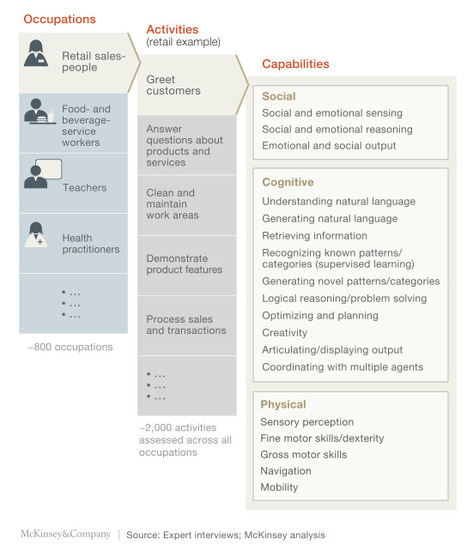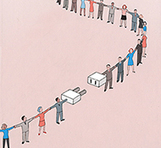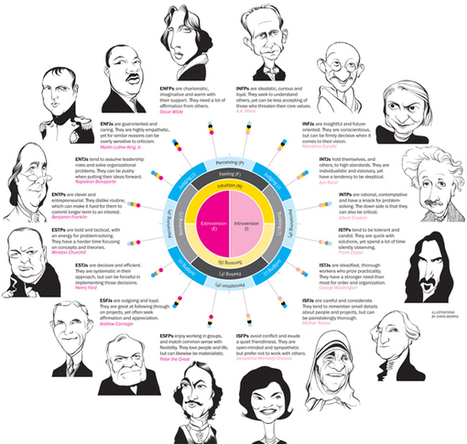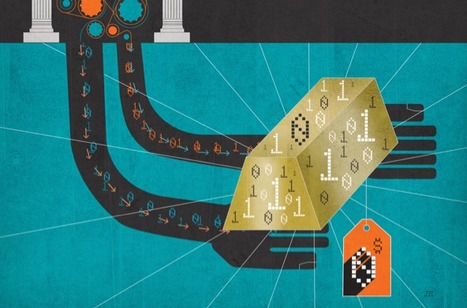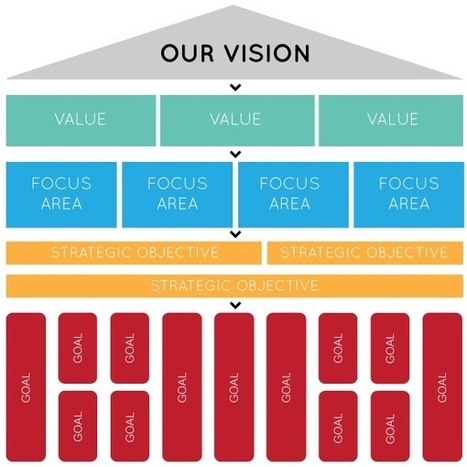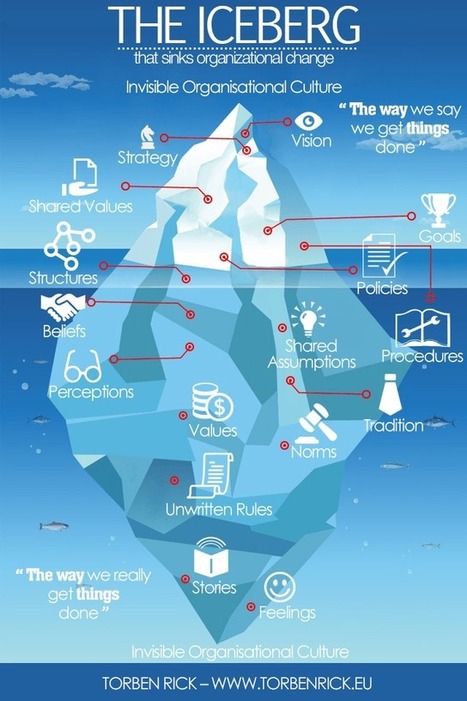 Your new post is loading...
 Your new post is loading...
Learn about your industry and get caught up with current trends. First things first, you need to do a little homework about your specific industry. Review some back copies of trade magazines and articles from industry leaders and influencers. Going over these articles and editorials can help you catch up to speed and see what's currently being discussed, as well as help you form your own opinion. Personally, websites like PYMNTS.com and Tom Noyes' Star Point blog have both been incredible assets for me. Without sources like those, I wouldn't have obtained as much as information as I have, along with being updates on the latest payments trends.
Via The Learning Factor
The potential of artificial intelligence and advanced robotics to perform tasks once reserved for humans is no longer reserved for spectacular demonstrations by the likes of IBM’s Watson, Rethink Robotics’ Baxter, DeepMind, or Google’s driverless car. Just head to an airport: automated check-in kiosks now dominate many airlines’ ticketing areas. Pilots actively steer aircraft for just three to seven minutes of many flights, with autopilot guiding the rest of the journey. Passport-control processes at some airports can place more emphasis on scanning document bar codes than on observing incoming passengers.
What will be the impact of automation efforts like these, multiplied many times across different sectors of the economy?1 Can we look forward to vast improvements in productivity, freedom from boring work, and improved quality of life? Should we fear threats to jobs, disruptions to organizations, and strains on the social fabric?2
Via The Learning Factor
At many companies, sales generation activities have become disconnected from the operational activities required to fulfill that demand — resulting in conflicting objectives and foregone business opportunities. Bringing the supply and demand sides of an enterprise together can represent a significant opportunity for efficiency and value creation.
Many companies compete in multiple product or customer categories, each of which requires a distinct supply chain capability. Such companies are challenged to develop capabilities in both cost leadership and product or service differentiation — a tall order, given that the ability to compete in different strategic segments at the same time requires precise coordination of the sales side of the company with supply chain operations.
Via The Learning Factor
There was a time in the not-so-distant past when the American workplace operated under an implicit agreement: Employees who worked hard at their jobs and stayed loyal to a company were rewarded with job security, health benefits, and other perks. This bargain is an example of what’s known as the norm of reciprocity — repaying one kindness with another —and reciprocity is a universal component of the moral code that governs human behavior. Yet in today’s work world, reciprocity operates with less force.
Via The Learning Factor
Business leaders today are faced with an extremely dynamic business environment, characterized by technological innovation, blurring boundaries among industries, shifts in customer behavior, scarcity of talent, and huge variations in growth across regions. HR functions need to help companies meet these challenges as true strategic partners. To fulfill this mandate, however, HR leaders need a clear view of their current capabilities, their priorities over the next three to five years, and the best way to tailor efforts to improve.
Via The Learning Factor
When it comes to retail innovation one thing remains constant – customers are continuing to look for convenience, choice, value and an enjoyable shopping experience.
While the department store, discount chain, mall, and big box center may no longer be the most convenient way to shop it doesn’t mean the end of these retail models.
But for those retail pioneers from earlier eras that fail to recognize how digital technology has changed shopper expectations and experiences – such as Sears, JCPenny, Best Buy, Circuit City, Barnes & Noble, Dominick’s Grocery Stores and others – it’s time to adapt, revamp or die.
Via The Learning Factor
How you handle the first 10 minutes of your workday can largely determine how productive and effective you’ll be the rest of the day.
“Getting off on the right foot isn’t just important with relationships, it’s important with the start of any workday, as well — particularly busy ones,” says Michael Kerr, an international business speaker and author of “You Can’t Be Serious! Putting Humour to Work.” “The first 10 minutes can also set the tone and your attitude for the day — so it’s imperative that you start it off right, with a clean slate.
Via The Learning Factor
Worry less about the future of work and notice what is happening right now.
If we invest time today on areas that are holding back our workplaces now, we’ll be better equipped to adjust to the future of work.
One area we need to invest time to change is workplace hierarchies. They are slowing down a business’s agility to respond to dramatic shifts in the marketplace . Managers need to invest time switching to a culture that emboldens employees and managers to work together to redefine their working relationship.
Via The Learning Factor
Developed in the 1960s by mother daughter pair, Katherine Cook Briggs and Isabel Briggs Myer, the Myer-Briggs Type Indicator (MBTI) is based on theories by prominent psychologist, Dr Carl Gustav Jung. Each year, more than 1.5 million MBTI personality tests are conducted across different individuals to help them explore various goals.
It’s usually employed by companies such as Ernst & Young to assess the job-fit of a potential candidate, improve their communications with their colleagues and to enhance team unity in an organization. This is achieved by increasing one’s self-awareness of his or her strengths and weaknesses through personality type identification.
Via The Learning Factor
The days of skiving behind your boss's back may be numbered, following the announcement of a new product that can track your every movement in the workplace.
Electronics manufacturer Hitachi has unveiled a high-tech ID badge that not only tracks an employee's exact location within the office, it also keeps a record of all the other staff members they have spoken to, for how long and how energetically.
Dubbed the Business Microscope, the device will also send an employer information on how much time each member of staff spends out of their seat - and even how long they have spent in the toilet.
Via The Learning Factor
Google “data as a currency,” and you’ll get back search results in the millions. “What if Web Users Could Sell Their Own Data?” asks a blogger for the New York Times.1 A story in Information Management highlights “Big Data Analytics: The Currency of the 21st Century Enterprise.”. You’ll find stories heralding big data as the new currency for science, stories on the personal data marketplace, and even stories on stolen data as a currency—not to mention prominent TED talks, World Economic Forum studies, and multiple books on the subject. The gist of the argument: Personal data has an economic value that can be bought, sold, and traded. Remarkably, one area has gone largely unexplored: the role that government will—or should—play in establishing data as a currency. Given the problems governments face in maintaining stable monetary systems, many data enthusiasts would just as soon have government stay away from this emerging instrument of exchange.
Via The Learning Factor
Transparency has become a popular concept in management circles in recent years, no matter how little enthusiasm you may have for the word itself. Now the topic has been thrust into our everyday lives with disclosures, or leaks, of alleged US secret intelligence information by Edward Snowdon. Increasingly, we are asking ourselves "How much transparency is the right amount?" Transparency is given credit for fostering trust among members of an organization, building loyalty among employees, and generally creating better places to work. For many years we observed need-to-know policies (that may have had their origins in the military) among managers of leading organizations. This slowly evolved in some organizations into policies that gave employees much more information about the activities of the enterprise and more voice in determining what they felt they needed to know.
Via The Learning Factor
|
Corporations across the globe are increasing their use of external talent. In the U.S. alone, companies are engaging roughly 6.4 million independent contractors, freelancers, and other types of contingent workers. They’re doing this because hiring independent workers on a contingent basis increases business flexibility and agility, provides access to hard-to-hire specialized talent, and potentially reduces costs. Because of these benefits, contingent or contract-based external talent already makes up about one-third of the average large corporation’s total workforce. This percentage is expected to grow in the coming years.
Via The Learning Factor, BOUTELOUP Jean-Paul
Here's the central law of employee motivation, of coaxing a great performance from your employees, day after day: Employees who are selected, oriented, and reinforced properly, and who are surrounded by peers of the same caliber, will thrive when given significant autonomy. Otherwise, they'll wither.
There are dozens of studies to support this, inside and outside of business life. The case for autonomy: just look in the mirror.
Via The Learning Factor
Everyone wants to be recognized for doing a good job, to be able to earn promotions and raises and to move up the organization. However, the path isn't always clear, and sometimes we are our own worst enemies--standing in the way of our own success.
Via The Learning Factor
Strategic planning is much easier than many people realise. If you have an intimate knowledge of your business and are able to think pragmatically about your strengths and weaknesses, you should be able to create a strategic plan fairly easily.
Take a deep-dive into each of the components and giving some tips on how to actually create them effectively.
Via The Learning Factor, Jim Lerman
Some aspects of organizational culture are visible on the surface, like the tip of an iceberg, while others are implicit and submerged within the organization. Because these ingrained assumptions are tacit and below the surface, they are not easy to see or deal with, although they affect everything the organization does.
Via The Learning Factor
With a mission to “organize the world’s information and make it universally accessible,” Google is a central part of the current focus on huge amounts of data. Even the name Google is rooted in largeness, as it was derived from googol, an alternate term for 10100.
Hal Varian, chief economist at Google and emeritus professor at UC Berkeley, has been with Google for more than a decade and has unique insight into the past and future of data analytics.
In a conversation with Sam Ransbotham, associate professor of information systems at the Carroll School of Management at Boston College and guest editor for the MIT Sloan Management Review Data and Analytics Big Idea Initiative, Varian says that companies need to beef up their systems to function within an overwhelming data flow — including new voice-command system data and other computer-mediated transactions.
Via The Learning Factor
Today, I’m proud to announce the release of Altimeter Group’s second report on Digital Transformation. This new report is aimed at executives and digital strategists to help them (you) further understand the state of digital transformation as you plan your next steps and investments.
In our initial report, “Digital Transformation: Why and How Companies are Investing in New Business Models to Lead Digital Customer Experiences (DCX),” we learned that digital transformation was as much about technology as it was about people. It was a much more human story, one that shared insights, advice and cautionary tales from those on the front lines.
Via The Learning Factor
For years, we women have kept our heads down and played by the rules. We’ve been certain that with enough hard work, our natural talents would be recognized and rewarded.
We’ve made undeniable progress. In the United States, women now earn more college and graduate degrees than men do. We make up half the workforce, and we are closing the gap in middle management. Half a dozen global studies, conducted by the likes of Goldman Sachs and Columbia University, have found that companies employing women in large numbers outperform their competitors on every measure of profitability. Our competence has never been more obvious. Those who closely follow society’s shifting values see the world moving in a female direction.
Via The Learning Factor
A study by University of Sydney researchers produced this map showing the flow of jobs and wages around the world.
In Australia’s case, China has 5 million people just to make goods for Australians.
The workers, on low wages, support Australia’s lifestyle. For example, a computer bought in Australia (average domestic wage US$59,700) might be assembled in China (average domestic wage $US2,700) and Thailand ($US2,100) using electronic circuits made in the Philippines ($US1,700).
Via The Learning Factor
It seems like everyone is calling themselves an entrepreneur these days. Everyone is after that next genius idea hoping to make it big, but while everyone wants that success, only a few can earn it. Those who have been successful know what separates the real entrepreneurs from what Mark Cuban coins as “the wantrepreneurs”. Here are the qualities of a real entrepreneur from some of the industry’s best. 1. “Real entrepreneurs make it happen. Wannabes make excuses.” If an entrepreneur was a super hero, pessimism would be his arch nemesis. A loser makes excuses to not even try, but having the determination to greet failure and push even further is what makes a real entrepreneur. 2. Real entrepreneurs are driven by their passion, wantrepreneurs are driven by what they think their passion should be.
Via The Learning Factor
Ever wondered how it is your optimistic friend always seems to be unfazed by stress? Scientists may have pinpointed a possible reason for why. Researchers from Concordia University found that optimists' stress hormone levels remain more stable in the face of stressful moments compared with pessimists. "On days where they experience higher than average stress, that's when we see that the pessimists' stress response is much elevated, and they have trouble bringing their cortisol levels back down," study researcher Joelle Jobin, who is a Ph.D. candidate in clinical psychology at the university, said in a statement. "Optimists, by contrast, were protected in these circumstances."
Via The Learning Factor
|



 Your new post is loading...
Your new post is loading...





